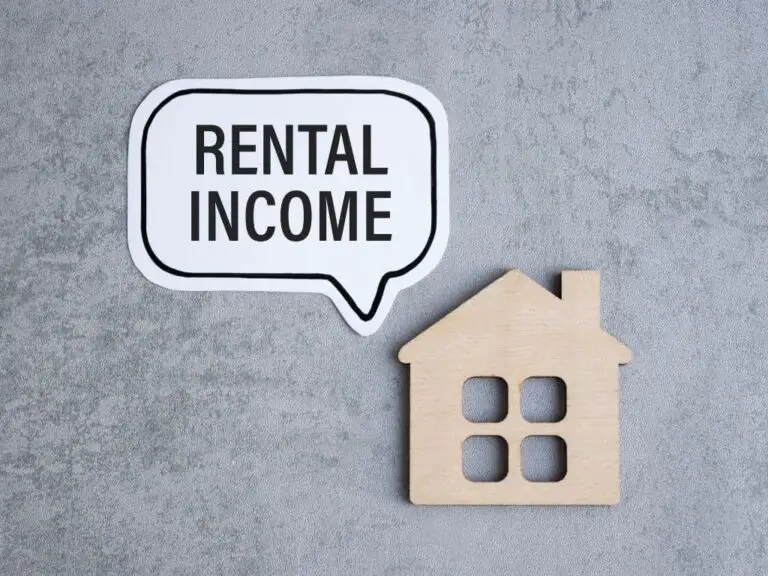What Is the Difference Between ALTCS and AHCCCS?
The main difference between ALTCS and AHCCCS is the level of care provided. While AHCCCS provides comprehensive health insurance coverage for low-income individuals and families, ALTCS is specifically designed to cover long-term care services for the elderly and disabled who require a higher level of care. While AHCCCS is a broader program, ALTCS is a specific program within AHCCCS catered to those who need long-term care services.
ALTCS (Arizona Long Term Care System) is a specific program under AHCCCS (Arizona Health Care Cost Containment System) targeted towards individuals who are 65 or older, or have a disability, and require nursing facility level of care.
While AHCCCS serves as Arizona’s Medicaid program, offering a broad range of health insurance and medical services to individuals who meet certain income and other requirements, ALTCS specifically focuses on providing long-term care services.
These services can be provided either in an institution, or a home or community-based setting, and include nursing facilities, hospice, attendant care, assisted living, adult day care health services, home health services, home delivered meals, and case management.

ALTCS vs AHCCCS: What’s the Difference?
ALTCS and AHCCCS are both health insurance programs for the residents of Arizona, but they cater to different needs and populations.
The Arizona Health Care Cost Containment System (AHCCCS) is Arizona’s Medicaid program and provides health insurance to low-income residents of the state, offering various medical programs and resources to those who meet certain income and other requirements. AHCCCS covers a wide range of health care services, including doctor’s visits, immunizations, specialist care, hospital services, emergency care, and more.
On the other hand, the Arizona Long Term Care System (ALTCS) is a component of AHCCCS designed specifically to assist individuals who are either 65 or older or disabled, and require a nursing facility level of care. ALTCS covers not only the standard medical services provided by AHCCCS but also additional services tailored to long-term care. These include nursing facility services, hospice, attendant care, assisted living facility, adult day care health services, home health services, home delivered meals, and case management.
What Is ALTCS?
The Arizona Long Term Care System (ALTCS) is a health insurance program designed to assist individuals who are either aged 65 and older or have a disability, and who require a nursing facility level of care. This program provides services not just in nursing homes but also in home or community-based settings. The program allows eligible individuals to live in their own homes or in an assisted living facility while receiving the necessary in-home services.
The ALTCS program encompasses a wide range of services including doctor’s visits, hospital services, emergency care, behavioral health, family planning services, and more. The program also provides long term care services such as nursing facility care, hospice, attendant care, home health services, and case management.
Eligibility for the ALTCS program is determined based on both financial and non-financial requirements. The process takes into account an individual’s resources and income, as well as their medical eligibility. Some individuals who provide personal or attendant care to an ALTCS member residing in their home can receive income that is not counted toward eligibility for certain programs under the Difficulty of Care Income Exclusion.
The ALTCS program operates like a Health Maintenance Organization (HMO), working with health plans, doctors, hospitals, pharmacies, and specialists to provide care. Individuals approved for the program choose a primary care doctor who coordinates their care, authorizes non-emergency medical services, and refers them to specialists when necessary.
What Is AHCCCS?
The Arizona Health Care Cost Containment System (AHCCCS) is Arizona’s Medicaid agency that offers health care programs to serve residents who meet certain income and other requirements. AHCCCS provides medical insurance coverage for individuals who are 65 or older, those with disabilities, and individuals requiring a nursing home level of care under its Arizona Long Term Care System (ALTCS).
The ALTCS program is designed for individuals who are elderly or have a disability and need a level of care typically provided in a nursing home, but do not necessarily have to reside in a nursing home. Services can also be provided in home or community-based settings. The ALTCS program provides a variety of services including nursing, hospice, attendant care, assisted living facility, adult day care health services, home health services like nursing services, home health aide, therapy, home-delivered meals, case management, and dental services.
AHCCCS also provides coverage for adults, caretaker relatives, children, individuals with developmental disabilities, pregnant women, women requiring screening for breast or cervical cancer, and working individuals with disabilities. The covered medical services encompass doctor’s visits, immunizations, prescriptions, hospital services, emergency care, pregnancy care, behavioral health, family planning services, dialysis, and more.
In addition to ALTCS, AHCCCS offers a variety of other programs and resources, including the Children’s Rehabilitative Services program, assistance for individuals needing help paying Medicare costs, and the Freedom to Work program for working individuals with a disability. AHCCCS contracts with several health plans to provide these services, operating similarly to a Health Maintenance Organization (HMO).
How to Apply for ALTCS?
To apply for ALTCS, interested individuals are required to contact or visit an Arizona Long Term Care office. The application process for ALTCS is separate from the standard application process for AHCCCS Health Insurance or Medicare Cost Sharing programs, and is not available through the Health-e-Arizona Plus online system.
In order to successfully apply for ALTCS, individuals must meet certain medical, income, and resource requirements. The process involves a pre-admission screening, an interview, and a financial eligibility assessment. Once the application is submitted, the state of Arizona will determine if the applicant is eligible for the ALTCS program.
For more information on the application process or to find an Arizona Long Term Care office, individuals are encouraged to contact their regional AHCCCS office or visit the AHCCCS website.
How to Apply for AHCCCS?
To apply for the Arizona Health Care Cost Containment System (AHCCCS), Arizona’s Medicaid agency providing health care programs to serve Arizona residents, you have two primary options: applying online or printing and submitting a physical application.
For online applications, visit the Health-e-Arizona Plus (HEAplus) website. This platform allows for applications for AHCCCS Medical Assistance, Nutrition Assistance, and Cash Assistance. Applications can be made for oneself, one’s family, or someone close to the applicant. Health-e-Arizona Plus is available in both English and Spanish.
For physical applications, there are two different forms depending on the applicant’s situation. Use the application from the Department of Economic Security (DES) Application page if the applicant is an adult without children, a pregnant woman, a family with children, or applying for a child only.
If the applicant is 65 years of age or older, blind or disabled, a working individual with a disability (under the Freedom to Work program), or someone seeking help with Medicare costs only, use the Medicare Cost Sharing and AHCCCS Health Insurance Application – DE-103.
Please note, these application processes do not apply for individuals needing Arizona Long Term Care System (ALTCS) services, such as in-home healthcare, nursing facility, or assisted living. ALTCS has a separate application process.
For those ineligible for AHCCCS medical assistance or waiting for their application to be processed, they may qualify for drug and alcohol and mental health treatment services through other funding sources administered by the Regional Behavioral Health Authority (RBHA). Contact the RBHA in your area for more information.
When Should You Choose ALTCS Over AHCCCS
You should choose ALTCS over AHCCCS when you or the person you are applying for is aged 65 or older or has a disability that necessitates a nursing facility level of care. This care can be provided in an institution, a home, or a community-based setting. Therefore, qualifying for ALTCS does not necessarily mean residing in a nursing home. Many ALTCS members live in their own homes or in assisted living facilities where they receive needed in-home services.
In addition to the services provided by AHCCCS, those who qualify for ALTCS can receive services such as nursing facility care, hospice care, attendant care, assisted living facility care, adult day care health services, home health services (such as nursing services, home health aide, therapy), home-delivered meals, case management, and dental services up to a certain limit.
Furthermore, some individuals who provide personal care or attendant care to an ALTCS member who resides in their home are eligible for a Difficulty of Care income exclusion. This means that the income they earn from providing these services is not counted towards AHCCCS eligibility in some instances.
Can You Get Both ALTCS and AHCCCS Coverage?
Yes, it is possible to receive both Arizona Long Term Care System (ALTCS) and Arizona Health Care Cost Containment System (AHCCCS) coverage. ALTCS is a part of the AHCCCS program, specifically designed to provide long-term care services for individuals who are aged 65 or older or those with a disability who require a nursing facility level of care. These services may be provided in an institution, or in a home or community-based setting.
ALTCS program contractor works similarly to a Health Maintenance Organization (HMO), coordinating with various health care providers, including doctors, nursing homes, assisted living facilities, hospitals, pharmacies, specialists, etc., to deliver care. Individuals enrolled in ALTCS also have a case manager assigned to them to coordinate their care.
The services provided by AHCCCS include doctor’s visits, immunizations, prescriptions, lab and X-rays, specialist care, hospital services, emergency care, pregnancy care, surgery services, behavioral health, and more. For those who qualify for ALTCS, they receive additional services such as nursing facility, hospice, attendant care, assisted living facility, adult day care health services, home health services, home-delivered meals, case management, and dental services.
It’s important to note that while both AHCCCS and ALTCS provide health coverage, the eligibility requirements for each program may vary. Therefore, individuals seeking to receive coverage from both programs must meet the eligibility criteria for each.
Frequently Asked Questions
-
What is the difference between ALTCS and Ahcccs?
AHCCCS, the state program responsible for implementing the Federal Medicaid program (a program to provide health care services for the poor), is part of the AHCCCS. ALTCS offers long-term and acute care for people who are older than 65, disabled physically or mentally.
-
Who qualifies for Arizona Medicaid?
Arizona Medical Assistance Program: Who can apply? Arizona Medicaid eligibility is only for residents of Arizona. You must also be an American citizen, U.S. citizen, permanent resident or legal alien.
-
How much do nursing assistants make in Arizona?
What is the average salary for a Certified Nursing Assistant in Arizona? As of July 26, 2022 the average salary for a Certified Nursing Assistant in Arizona was $33,683, but it can vary between $30,695 to $37,191.
-
How does Arizona pay for assisted living?
Arizona’s Long Term Care System, (ALTCS), pays for the medical and related care for Arizona residents who live in assisted living facilities. However, it does not pay for accommodation and meals. Based on their location and coverage, assisted living residents may pay approximately $1150 per month for basic living expenses.
-
What percentage of nursing home patients are incontinent?
Incontinence was a condition that physicians reported on or attempted to assess in less than 15% patients.
-
What’s the poorest city in Arizona?
Quartzite is Arizona’s poorest municipality. Quartzite has a median household income of $20,979 and a mean household income of $37,318. Red Rock, in Apache County (the poorest of the cities), had no minimum household size.
-
Can you be evicted in Arizona right now 2022?
Arizona law prohibits landlords from evicting tenants and forcing them to leave the premises without probable cause. The tenant can remain as long as they do not break any rules during their rental period.
-
What is the oldest you can be to get Medicaid?
If you’re 65 years or older, blind or disabled or have limited resources and income, apply. If you’re terminally ill, apply if hospice care is something that interests you. If you’re aged, blind or disabled, live in a nursing facility, and have limited resources and income, apply.
-
Who is eligible for Medicaid Arizona?
Senior citizens 65 years of age or older. Individuals who are blind or have a disability. Persons who require in-home or nursing home care. People with developmental disabilities who require long-term care.
-
How much does a family caregiver make in Arizona?
ZipRecruiter has seen salaries as high at $109,446 as low as $18,484, but the majority of family caregiver salaries range from $27,240 (25th%) to $47.670 (75th%), with Phoenix’s top earners making $71,505 per year.
-
What age does Medicaid stop in Georgia?
Medicaid, a Medical Assistance Program, provides coverage for under-19-year-olds, pregnant women, children with dependent children, people aged over 65, those who have lost their sight, or are disabled, as well as anyone whose income is not sufficient to cover the costs of medical care.
-
Is Arizona giving extra food stamps in 2022?
Additional food stamp benefits are available for May 2022 as part of the Emergency Allotment Program (EA). The extra food stamps will be available to recipients who receive food stamp benefits from approved states. Cardholders of SNAP EBT cards will be eligible for the full benefit amount appropriate to their household size.
-
Which state has highest income limit for Medicaid?
Alaska is the state that has the highest Medicaid income limits. Alaska’s maximum income for households must be less than $77 526. Alaska Medicaid income limits include $22,597 for single households.
-
What’s the difference between a care home and a nursing home?
A nursing home has always had a nurse to assist with medical needs. While both residential and nursing care homes offer 24-hour care, the difference between them is that nursing homes can provide more comprehensive care.
-
How often do you check an incontinent patient?
You should not smell urine or feces if you suspect that the care has been compromised. It is important to monitor residents and check for episodes of incontinence every 2 hours. Residents also need to have their products changed if necessary.






